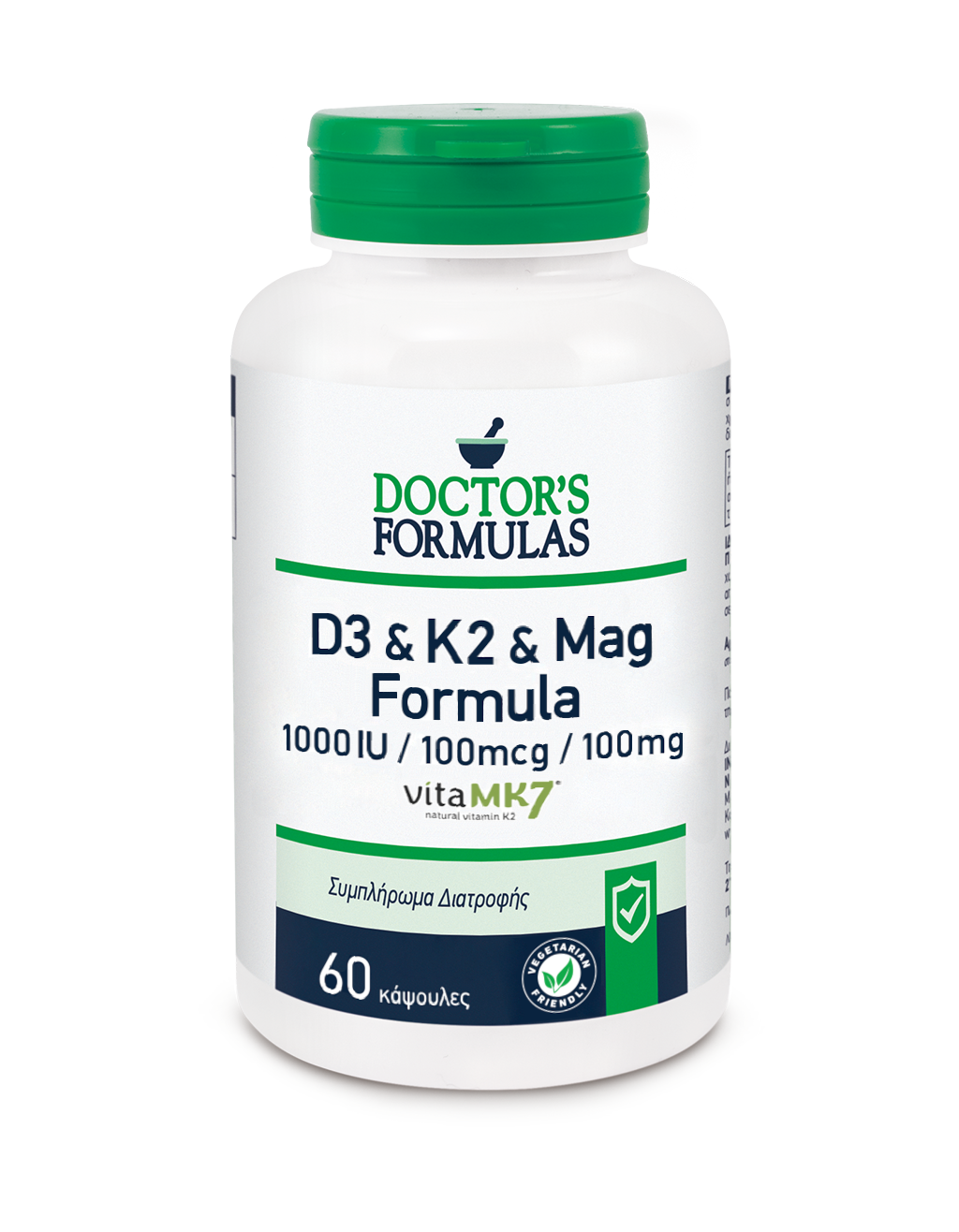The role of Vitamin K in Osteoporosis & Cardiovascular Health
The role of Vitamin K
in Osteoporosis & Cardiovascular Health
The Dual Role of Vitamin K2 in “Bone-Vascular Crosstalk”:
Opposite Effects on Bone Loss and Vascular Calcification
Osteoporosis (OP) is the most common bone disease that affects elderly men and women. It is a metabolic skeletal disorder caused by an imbalance between bone formation and resorption, leading to a loss of bone mass and quality, skeletal structure deterioration, and an increased risk of fractures. OP is classified into a primary and secondary forms with distinct etiological backgrounds.
Type 1 (primary) is typical of postmenopausal women in whom the decrease in estrogenic levels is associated with an inflammatory state linked to an increase in osteoclast activity and a consequent imbalance of bone metabolism, whereas type 2 (secondary) occurs in both males and females, but its pathologic mechanism has only partially been clarified.
Vascular calcification (VC) is defined as the ectopic deposition of the mineral matrix in the vessel wall. It occurs prevalently in aging and primary chronic conditions (hypertension, diabetes mellitus, and chronic kidney disease), representing an important risk factor for cardiovascular morbidity and mortality. Previously, the calcification of the vessel wall was known as a passive, degenerative and uncontrolled process caused only by the abnormal precipitation of calcium crystal in the vasculature.
Nowadays, a growing body of evidence suggests that it is an active, regulated event that shares similar characteristics with bone formation and metabolism. In particular, its discovery in the calcified vessel of bone-related proteins, bone-like structures, and osteoblastic like-cells derived from vascular smooth muscle cells (VSMCs) has highlighted the active and cell-mediated nature of this vascular process.
Although OP and VC produce differing pathophysiological effects, their onsets frequently coexist in aging, representing one of the main public health problems with significant morbidity and mortality. For many years, their coexistence was considered independent and only related to age, but several studies have provided support for a close link between bone and vascular health. In this regard, many findings suggest that bone loss in OP may promote and increase the risk of cardiovascular events and vascular atherosclerosis.
In the Framingham, Women’s Health Across the Nation (SWAN), Multi-Ethnic Study of Atherosclerosis (MESA), and Rotterdam studies, loss of bone mineral density (BMD) was associated with the development and progression of aortic calcification as well as with a higher risk of cardiovascular disease (CVD) mortality. On the other hand, a direct correlation between VC and risk of bone fracture was also found. The MINOS study, for example, emphasized that men with aortic calcification present a major risk of bone fracture. This was also found in healthy postmenopausal women with aortic calcification associated with lower BMD and increased risk of femur fractures.
Different hypotheses have been proposed to better explain the link between bone and vascular system,
which is commonly referred to as “bone-vascular crosstalk”
First, bone loss and vascular calcification share common risk factors, including smoking, physical activity, alcohol intake, Type 2 diabetes, menopause, and hypertension. In addition, both are characterized by chronic low-grade inflammation and oxidative stress and by the involvement of bone morphogenetic proteins (BMP), osteoprotegerin, and parathyroid hormone, thus also suggesting common pathophysiologic mechanisms.
In this context, it is important to mention the role of the VitK2 family, lipid-soluble compounds that play a pivotal role in the maintenance of calcium homeostasis. Specifically, it is involved in the “calcium paradox”, a phenomenon in which a low calcium deposition in the bone tends to be associated with a parallel increase of calcium deposition in the vessel wall as a consequence of impaired calcium metabolism.
Given that the role of VitK2 in bone-vascular crosstalk and the “calcium paradox” has only been partially explained,
this review aims to describe and summarize the most relevant knowledge concerning the nature of this vitamin,
its molecular mechanism, and clinical outcomes at the bone and vascular level.
In summary, although controversial results can still be found in the current literature, the evidence analyzed and reported in this review may support the idea that VitK2 can exert a relevant role in the maintenance of bone and vascular health.
With regard to bone disorders, its ability to reduce loss of BMD and fracture risk, as well as to improve bone quality, has been described by several clinical studies which, moreover, have confirmed that OC γ-carboxylation is the main mechanism of action through which this natural compound is able to improve bone health.
On the other hand, several bodies of clinical evidence suggest an analogous protective role of VitK2 at the vascular level, emphasizing a strict association between vitamin serum level, MGP γ-carboxylation levels, reduction of VSMCs osteogenic trans-differentiation, and possibly the risk of cardiovascular events.
The VitK2 effects described in the regulation of the phenomenon named
“bone-vascular crosstalk” occurs through several molecular mechanisms.
Specifically, at the vascular level, VitK2 acts as a cofactor for GGCX, allowing the activation of MGP through its carboxylation. In turn, the active MGP carboxylated form may directly inhibit both the ectopic Ca2+ precipitation in the vessel wall and, in parallel, VSMC osteoblast trans-differentiation by inhibiting BMP-2 expression. Furthermore, VitK2 may inhibit VSMC calcification, avoiding their apoptosis through the Gas6/AxL/Akt anti-apoptotic pathway.
Simultaneously, in bone tissue, VitK2 is able to modulate several molecular pathways. In fact, osteoblasts can promote bone matrix deposition through the activation of the SXR receptor bone mineralization via GGCX and OC, as well as osteoblast proliferation and activity through the control of oxidative stress (Ox-S) imbalance and the involvement of MGP and the Wnt/β-catenin signaling pathway. Of note, VitK2 can also regulate the osteoclast function of bone resorption through the inhibition of NF-kB.
Story Source:
Mandatori, D.; Pelusi, L.; Schiavone, V.; Pipino, C.; Di Pietro, N.; Pandolfi, A. The Dual Role of Vitamin K2 in “Bone-Vascular Crosstalk”: Opposite Effects on Bone Loss and Vascular Calcification. Nutrients 2021, 13,1222.
https://doi.org/10.3390/ nu13041222


